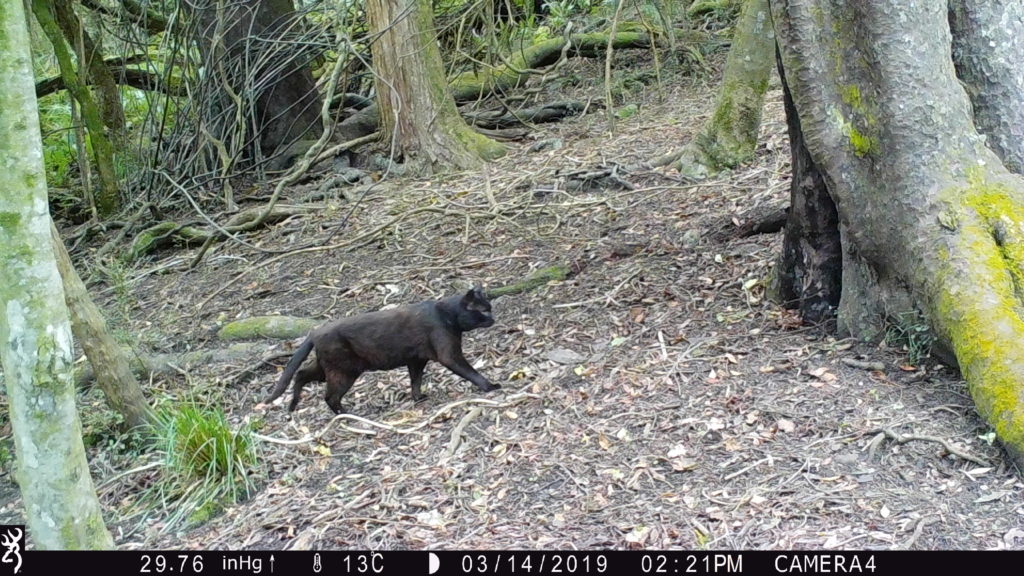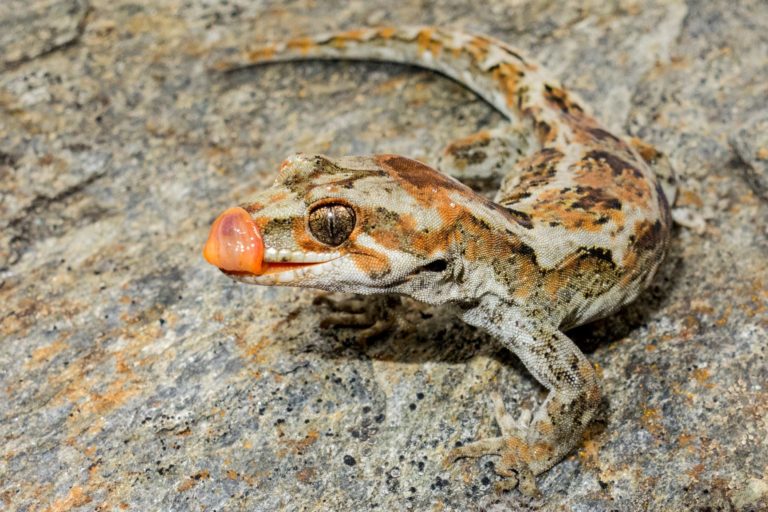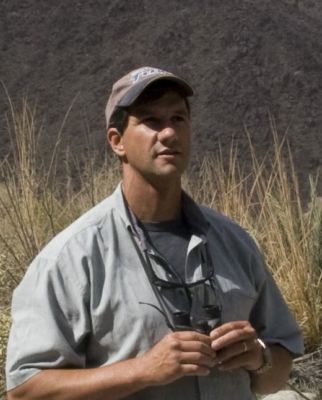What don’t we know? What challenges need further investigation?
In January of this year, Predator Free 2050 Ltd announced two funding initiatives – one for doctorate and post-doctorate research at tertiary and research institutions and the other for ‘Products to Projects’, where the aim is to ‘help fast track the design, research and development, testing, production and supply, and best practice demonstration of new and improved predator eradication tools and technologies’.
Given these and other recent funding opportunities and the interest from students in contributing to the predator free goal, Predator Free NZ Trust decided to ask scientists and others working in the predator free field what they see as the key challenges we’re facing and the ‘burning questions’ waiting to be answered.
Al Glen

Al Glen is a wildlife ecologist at Manaaki Whenua – Landcare Research. His research interests focus largely on invasive predators, including their impacts on native species, and methods for their detection and control.
How quickly do stoats reinvade after control operations?
Achieving a predator free New Zealand will probably rely on a strategy of localised eradications, building eventually towards national-scale eradication. For example, predators might first be eliminated from defendable areas such as peninsulas, then control efforts might spread across a ‘rolling front’. For this to work we need to be able to prevent predators from reinvading areas there they have already been removed.
This is impossible without basic knowledge of their movement behaviours, especially juvenile dispersal. This basic knowledge is lacking for stoats.
Stephen Horn
Stephen Horn is Project Manager for the Department of Conservation National Eradication Team. He has been involved for the past three years investigating the feasibility of eradicating pigs, mice and cats from Auckland Island and prior.
He is now looking at national objectives around island eradication as part of DOC’s National Eradication Team. Maukahuka Pest Free Auckland Island is looking to improve detection tools for pigs and cats, to help develop these stopping rules. These include AI programmes to consistently identify cats on trail cameras and a high-resolution thermal imaging camera to conduct aerial surveys for pigs.
The team have also been involved in trials for the development of new baits for stoats and feral cats. Monitoring intensively during an eradication attempt using an aerially applied bait will hopefully help to improve an understanding of why some individuals survive aerial baiting. This would inform prescription design that could hopefully make more eradication attempts single-event based successes.
Stopping Rules: how do you know when all individuals of the target species have been dispatched?

Enough is enough – but when is that exactly? For islands with rodents we are confident that two applications of toxic bait two weeks apart will clear an island, as long as enough bait is applied and comprehensive coverage is achieved. However, this single event approach doesn’t typically work for many other species.
Many larger mammal species require a suite of overlapping tools and approaches applied with sustained intensity that can put all individuals at risk and remove them faster than they can be replaced. The last individuals are often the weirdos, behaving in unexpected and undetected ways or changing what they do in response to lowering population density.
How do you know when they have all been dispatched? Stop too soon, and the eradication will fail. Keep going for months or years longer than necessary, and you waste valuable conservation dollars and potentially lose public support. For rodents we complete the bait application and wait to check to see if it worked much later (~2 years). When using multiple tools we need to monitor carefully to inform and constantly re-evaluate the action being taken relative to the individuals remaining.
To be effective you have to know what is there. We have been looking at the detectability of feral cats on Auckland Island, NZ Sub-Antarctic using a network of trail cameras at 500m spacing to test the feasibility of eradicating them at large scale. The quicker you can detect and respond the more efficient the wrap up of an eradication could be. For this situation it means developing software to help process huge volumes of images. Taking that further would mean transmitting a message of that detection remotely so response is rapid.
John Innes
John Innes is a researcher at Manaaki Whenua – Landcare Research at Kirikiriroa (Hamilton) and has studied small mammal pests, especially rats, for many years. He has been involved with recovery programmes of several birds including kokako, tui, kiwi, kaki, pateke, kakapo and takahe and also with “the wonderful and evolving world of unfenced and fenced ecosanctuaries”.
How do we progress effective, safe, affordable new toxins for ship and Norway rats?

Right now, stoats and possums are easier than ship and Norway rats to near-eradicate in the long-term, pending reinvasion dynamics. We know that some stoats and possums can be extremely difficult to catch, but the rates of recovery of ship and Norway rats are much greater because they can have multiple litters of offspring that can themselves breed in the season of their own birth.
Prefed aerial 1080 can kill nearly all ship rats, but without ongoing mop-up they are back within a year and in years 3-4 there are more than initially present because food is abundant (no possums) and predators few (no stoats and cats), and using 1080 more frequently (eg each 2 years) risks it becoming less effective op by op. 1080 that alternates with another toxin would be much better, and hopefully a stoat bait like PAPP could be integrated also.
New toxins and the bait(s) that hide them have a long road to getting on the shelf; they have to humanely and effectively kill the target and to not kill non-targets. Some new toxins (norbormide, tutin) are being explored. I would encourage students to join these efforts to maximise the speed with which these new tools are implemented or rejected, or put your minds to brand new toxin ideas.
I know that everyone hopes for a very alternative – perhaps genetic – tool, but this may take even longer, and present active programmes like kokako recovery are struggling with ship rat control right now. Personally, I can’t see, say four expensive gadgets that need servicing per hectare across the required scale (2000+ hectares) of wild NZ terrain ever replacing the efficacy of aerial distribution of a safe toxin.
Prof Carolyn (Kim) King
Prof Carolyn (Kim) King has retired from teaching, but is still associated with the University of Waikato, and will “never stop being interested in using my books and papers to help community groups, former students and colleagues tackle these questions”.
The key obstacle to achieving PFNZ2050 is the impossibility of permanent predator control at landscape scale.
Think of a bucket standing under a flowing tap. What chance does anyone have of emptying the bucket by bailing it out with a spoon? Most pests have very high natural mortality and recruitment rates, and the bar for removing animals faster than they can replace themselves is very high.

In this analogy, a large spoon can lower the water level in the bucket if the inflow is not too fast, but can’t empty it unless the tap is turned off. The only way to do that available now is first, to impose mass mortality, removing the entire breeding stock, and then, to protect the cleared area from immigration with an effective sea barrier or fence.
That works locally, in many wonderful sanctuaries and offshore islands, but on the mainland long-term, even the greatest advances in killing things can’t prevent natural selection from favouring the few that escape. And that strategy can’t be applied everywhere.
To get the same effect nationally and permanently, we need to find a safe way to impose mass infertility, ie, preventing pests from being born at all. Not only would that save us a lot of effort and expense, it would also end the current intractable arguments about ethics, animal welfare, and 1080.
Trouble is, pests are pests because natural selection is on their side. My burning question is: how and when can we change that equation in our favour?
Carey Knox
Carey Knox is Senior Herpetologist, Wildlands Consultants. His main research interests are improving knowledge and conservation of threatened and data-poor lizard (gecko and skink) species, particularly in the South Island and alpine/sub-alpine zone.

Is anything but a balanced multi-species pest control programme (that incorporates ALL introduced mammals, including mice) detrimental to native lizards (geckos and skinks) and invertebrates?
Some ecologists are concerned that removing certain predators out of a native ecosystem, whilst not controlling others, may have unintended consequences for native lizards and/or invertebrates. An example would be if feral cats, mustelids, and rats were removed, but mice were not controlled. Would this result in a massive increase in mice numbers (through removal of their main predators) which would then result in mice preying heavily upon lizards (and/or invertebrates) leading to significant declines or even local extirpation from the pest control area?
In some scenarios, it is possible that birds could benefit, but native lizards or invertebrates could suffer. How can we design pest control regimes that avoid these unintended consequences?
Jamie McAulay
Jamie McAulay is a Senior Ranger with the Department of Conservation in Fiordland National Park. He inputs into largescale predator control programmes to benefit kiwi, kea, rock wren, bats and lizards across biodiversity hotspots within Fiordland National Park. At 1.1 million hectares, Fiordland National Park is the country’s largest, and has 24 000 stoat and rat traps, run by DOC, Local Community groups and tourism businesses.

The untrappables hypothesis: Understanding and quantifying a behavioural framework to help understand how and why pests interact with traps or baits could prove crucial to predator free projects hoping remove stoats entirely from an area of interest.
In 2018 kiwi scientist Hugh Robertson and colleagues made an interesting observation. Stoat traps installed to protect kiwi chicks from predation were initially very effective, but this effect seemed to ‘wear off’ after a few years, with few kiwi chicks surviving. Following a 1080 drop the good results were again restored.
This pattern repeated itself several times over a 20 year period, and led them to theorise that sustained trapping could be removing the bold and explorative stoats and ‘selecting for’ more cryptic, careful or trap shy individuals.
Observations in other areas suggest a similar effect could be at play: eradications of stoats from islands have proven stubbornly difficult, with genetic evidence of in-situ breeding within densely trapped areas, and new work suggests exploiting these individual factors could prove a crucial link in the predator free strategy.
Grant Norbury
Grant Norbury is a senior scientist with Manaaki Whenua Landcare Research and co-ordinates the research they do for the predator-free initiative. His interests are in predator-prey interactions, pest management and wildlife conservation.

How to defend eradicated areas from reinvasion?
Animals quickly reinvade eradicated areas, thereby undoing the huge effort required to achieve 100% removal. Defending against reinvasion is difficult and requires three things. One, rapid detection of reinvading animals. Two, rapid removal of these animals before they have a chance to breed. And three, understanding the primary routes of reinvasion in order to deploy removal stations strategically in places most likely to intercept them.
If we cannot defend successfully, we will be in constant mop-up mode, having to return to areas previously cleared of pests.
Prof Philip Seddon

Philip Seddon is a conservation biologist with an interest in both threatened species restoration and pest species spatial ecology. He supervises or co-supervises student projects on cats, rats, and mustelids in the central South Island alpine and drylands systems.
What is the risk that dispersing juveniles of mammal pest species will reinvade areas from which predators have been successfully (and no doubt laboriously) eliminated?
We are able to get quite good information on adult predators, such as adult possums and stoats that have fairly stable and defined home ranges, by using radio and GPS tracking devices. Because adults tend to remain in circumscribed areas, it is possible to trap, tag, and then retrieve tags to download location information, either through retrapping, or proximity downloads. This gives us useful information on movement pathways, distances and directions which allows us to place control or detection devices at the best locations and spacing.
However, we know almost nothing about the longer distance movements of dispersing young animals – where they go, how far, what times of year, or where they might settle? This is because they tend to be hard to trap, might be too small for some tags or are still growing, and because they can move huge distances in unpredictable directions and become lost from a monitoring area.
Dispersing young predators could pose huge reinvasion risks to zones where predators have been eliminated. To understand and mitigate those risks we need to understand the movement ecology of dispersing young. Fortunately, technology is catching up with our research and management questions – small, lightweight GPS tags with satellite download can enable detailed tracking of dispersing animals in almost real time.

